Have you ever wondered when you are just chilling in your living room and right beside you your cat turns into a freshly baked loaf straight out of an oven?
This quirky phenomenon is called Cat Loaf!
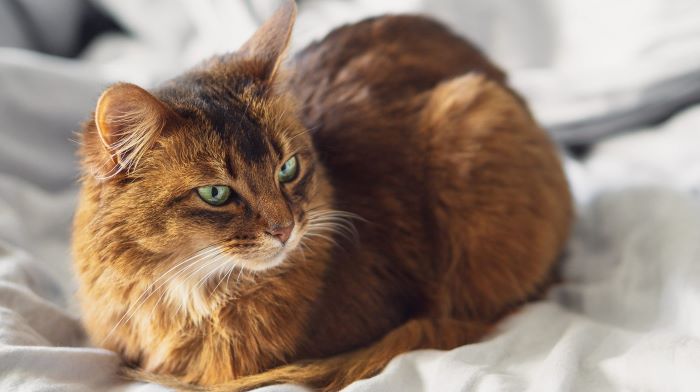
We spend years with our cats but there is always something new and amusing with these purr-fect creatures. Let’s try to figure out what cooks in our cat’s minds when they turn into cat loaves.
Why Do Cats Loaf? Explained
Dr. Leslie Sinn from Behavior Solutions says, “It’s very descriptive, People call it loafing because they look like a loaf of bread or a meatloaf”. Here are some common factors behind this behavior of cats:
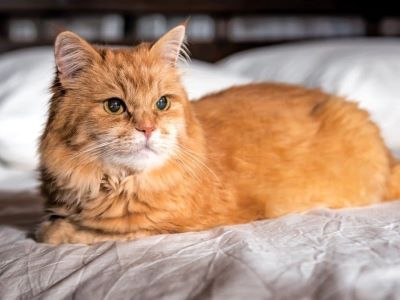
They Are Trying to Stay Warm
Cats have mastered the art of loafing, and it’s not just for show – they’re secret warmth-seeking experts! When you spot your cat transforming into a loaf, it’s their clever way of saving body heat.
Picture this: their tucked paws and curled-up form create a cozy little cocoon like a fluffy bread roll fresh out of the oven. By minimizing their surface area, cats trap heat close to their bodies, maximizing their toastiness.
A cat’s temperature also drops slightly when they sleep, The cat loaf helps them keep a comfortable body temperature without expending much energy.
It’s their instinct to find warmth, whether it’s snuggling up on a sunny windowsill or wrapping themselves like a furry baguette. So, next time you catch your cat loafing, remember that they’re not just striking a pose; they’re baking up some serious comfort in their quest for warmth.
To Feel Safe and Comfortable
It’s not just a quirky pose for warmth; it’s their way of saying, “I’m feeling safe and oh-so-comfy!” When a cat turns into a loaf, they’re essentially making their little cat fortress.
By tucking in their paws and curling up, they create a sense of security and protection. It’s like they’re wrapping themselves in a warm blanket of contentment, ready to take on the world from the comfort of their loafing throne.
So, next time you catch your feline friend in loaf mode, know that they’ve found their slice of serenity where they can indulge in their space and unwind in utter bliss.
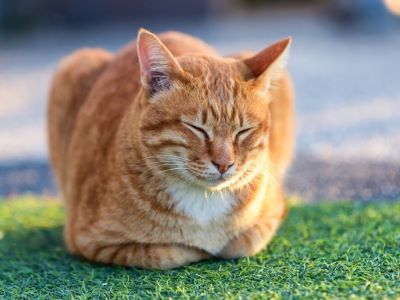
They Are Sick or in Pain
It’s important to recognize that loafing can also be a sign that something isn’t quite right in their world.
When a cat is sick or in pain, it may resort to loafing as a way to conserve energy and minimize discomfort. It’s their intuitive response to seek a position that requires less physical effort and strain.
So, if you notice your beloved cat loafing more than usual, it may be a subtle indicator that they’re not feeling their best.
It’s crucial to pay attention to any accompanying symptoms or changes in behavior and seek vet’s care to ensure their well-being and provide them with the care they deserve.
Types of Cat Loaf
Cats not only turn into a loaf, their different styles will let you know the details too. Here are some of them:
- Full Loaf: It’s when a cat expertly tucks all paws beneath their body, forming a complete loaf shape. all four paws neatly tucked under himself and his tail wrapped tightly around its body.
- Partial Loaf: a mischievous twist on the classic loaf. In this variation, the cat playfully extends one or two paws out, as if it can’t fully commit to a full loaf.
- Boat Face Loaf: This eccentric variation involves the cat tucking its paws in but leaving its face slightly exposed, resembling the head of a majestic boat.
- Sphinx Pose: In this pose, the cat maintains a partial loaf, with their front legs extended forward, resembling the noble Sphinx statues of ancient times, offering glimpses into a world only they truly understand.
How Much Is Too Much?
Cats turning into a loaf pose is not naturally bad. In fact, it’s a common behavior for cats to loaf as a way to feel safe, and comfortable, and save body heat.
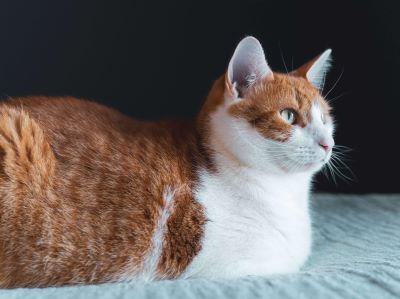
It’s a behavior that often brings them a sense of relaxation and pleasure. However, it’s important to keep an eye on your cat’s loafing habits to ensure it doesn’t become excessive.
According to Dr. M. Delgado, “Cats are notoriously skilled at hiding pain. It’s also possible your cat may be trying to indicate discomfort if they’re loafing. A cat who is still perched on its paws may be in pain.”
“So it’s good to know if the paws are totally tucked. If you suspect your cat may be in pain, take time to inspect their paws, or speak to a trusted expert about the situation.”
Cats with heart or lung diseases may sit hunched with their elbows extended outward and their heads lowered to make breathing easier.
Cats with abdominal pain, such as liver disease or chronic kidney disease may also sit in the loaf position in order to help take pressure off internal organs.
Additionally, if you notice that your cat is loafing overly, displaying significant changes in loafing behavior, or showing other unusual symptoms such as loss of appetite, lethargy, or pain, it may indicate an underlying health issue[1].
In such cases, it’s recommended to consult with a vet for a thorough examination to rule out any potential health problems.
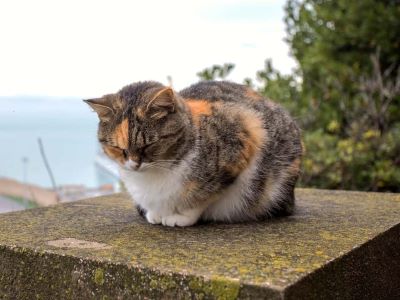
FAQs
Why Does My Cat Loaf on My Chest?
It’s how they show love and trust. Your cat may lie on your chest to show that you’re their protector. They love the warmth coming from your body and listening to your heartbeat. If you have more than one pet, your cat might simply be marking their territory around you to tell other pets to stay away.
Do Cats Loaf When They Feel Safe?
If they’re ‘loafing,’ it’s pretty safe to say they’re feeling content and secure because their best weapons (the claws) are tucked under their bodies. “And they tend to do that when they’re relatively relaxed and settling down into a snooze.” If their loaf is accompanied by slow blinks, purrs, and other signs your cat is happy, you can be sure that all is good with your favorite furball.
Why Do Cats Become a Loaf?
Your kitty’s best friend prefers warm temperatures and doesn’t enjoy feeling cold. Cats can make themselves into furry little loaves whenever they want but they may especially find the position beneficial when they need a little boost of warmth and coziness.
How Do You Know if a Cat Likes You?
There are several signs a cat loves you, including purring, following, grooming, cuddling, and showing you their bellies. Paying close attention to your cat’s body language and behavior can tell you how they feel in almost any situation, helping you determine whether they truly love you.
Why Do Cats Purr?
Does purring mean your cat is happy? In most cases, cats will purr when they are in a relaxed environment, sending out waves of calmness. This may also occur when you stroke them, and if this is the case, your feline friend is feeling happy or sociable.
Why Do Cats Loaf and Stare at You?
If your cat’s staring at you whilst also in a crouched position with their tail tucked in, it’s generally a sign that your cat’s frightened. You may also find them hiding somewhere like underneath a coffee table or bed and when they stare at you like this it’s because they’re keeping an eye on the potential ‘danger’.
Conclusion
So next time if you feel concerned that why do cats turn into a loaf? then fear not! Loafing is typically a harmless and adorable display of your cat’s character.
From their cozy and compact loaf shape to their blissful expressions, it’s a testament to their skill in finding the comfiest positions known to catkind. So, embrace the loafing wonder, and grab some bread-shaped pillows for your human loafing sessions.
Ultimately, it’s about finding a balance. Loafing is a natural behavior, but if you notice any drastic changes or worrisome signs, it’s always best to seek professional advice to ensure your cat’s well-being, and stay loaf, my friends!
Reference:
- Colgate. (2022). The Cat Loaf: What Is It & Why Do Cats Loaf, Anyway?- Hill’s Pet Nutrition.

